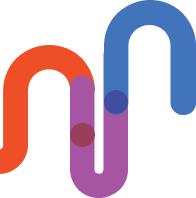


Soon the Include Me+ project will make available its first output, the Mediation in media study. This study offers a comprehensive set of recommendations, outlining a detailed methodology and the steps necessary for its implementation. The research aims to understand the inclusion, participation, and peacebuilding through mediation in media potential while developing a structured methodology for its application.
The study was compiled through two approaches: Participatory Action Research (PAR) and Desk research. Each partner organization conducted the PAR and desk research within their own geographical context, covering the following countries: Denmark, Finland, Germany, Spain, Turkey and Ukraine. Additionally, eucen, as a second-degree organization, conducted its research from a non-geographically bound European perspective, ensuring an EU-wide outlook.
Each partner produced a report on the PAR and a report on the Desk Research bringing together the findings. This combined approach ensures that the study not only provides an overview of the broader digital inclusion landscape but also delivers detailed, expert-backed recommendations.
Participatory Action Research (PAR) is a qualitative research methodology that actively involves participants in both the action and the research process. This approach ensures that those implementing the actions also take on the role of researchers, fostering a dynamic environment where stakeholders learn, reflect, and adapt collaboratively during the research process.
The PAR group was composed of representatives from different target groups of the project, including: Higher Education Institutions (HEIs), Digital Media Representatives, Civil Society Organizations (CSOs) and Students.
While each project partner followed their own tailored process, the overarching methodology adhered to the following structured phases:
Alongside the participatory research, the study also includes desk research conducted between May and December 2024. This desk research forms a crucial part of WP2, which seeks to identify the most critical elements influencing digital inclusion for vulnerable groups, particularly refugees and migrants.
To ensure a thorough and detailed analysis, the study employs a qualitative methodological approach that integrates:
The findings of this study will serve as the foundation for the IncludeMe+ educational programme, guiding content creation strategies and collaborations between key institutions such as HEIs and CSOs. By identifying key discussion points and challenges in the complex process of digital inclusion, the study aims to inspire innovative solutions for supporting at-risk groups in the digital era.
With all data now collected and analysed, the final study is set to provide valuable recommendations that will pave the way for a more inclusive digital media environment.